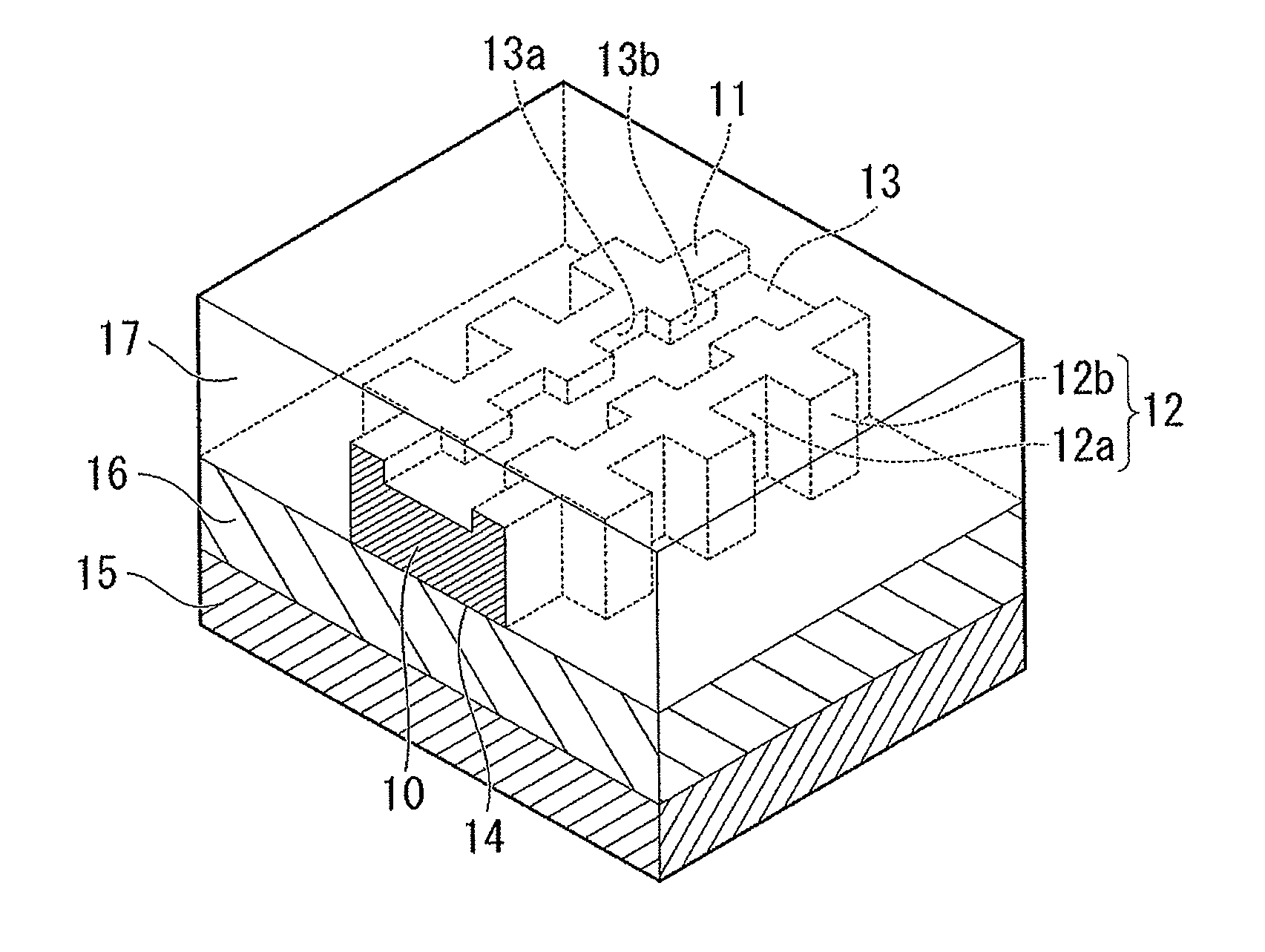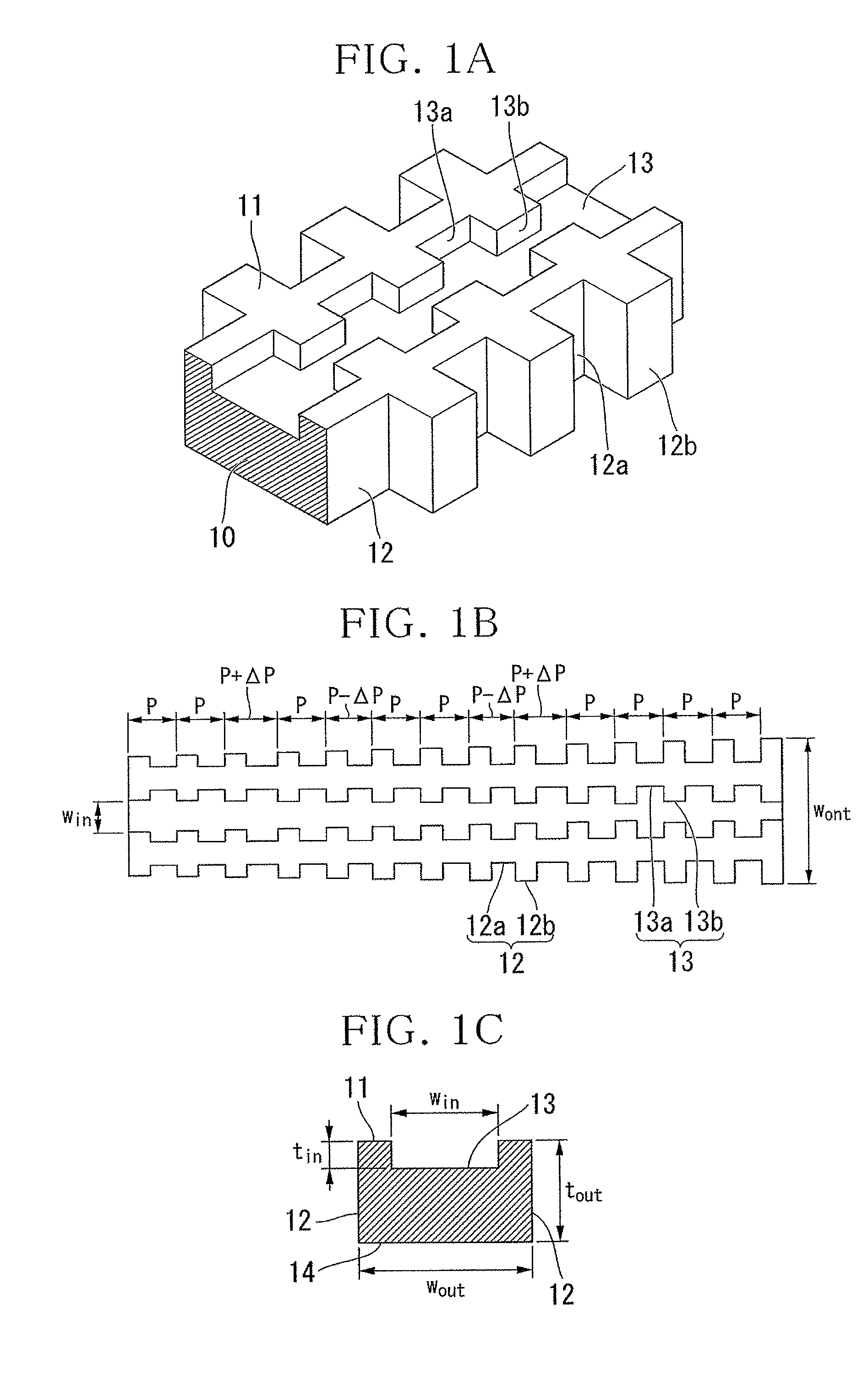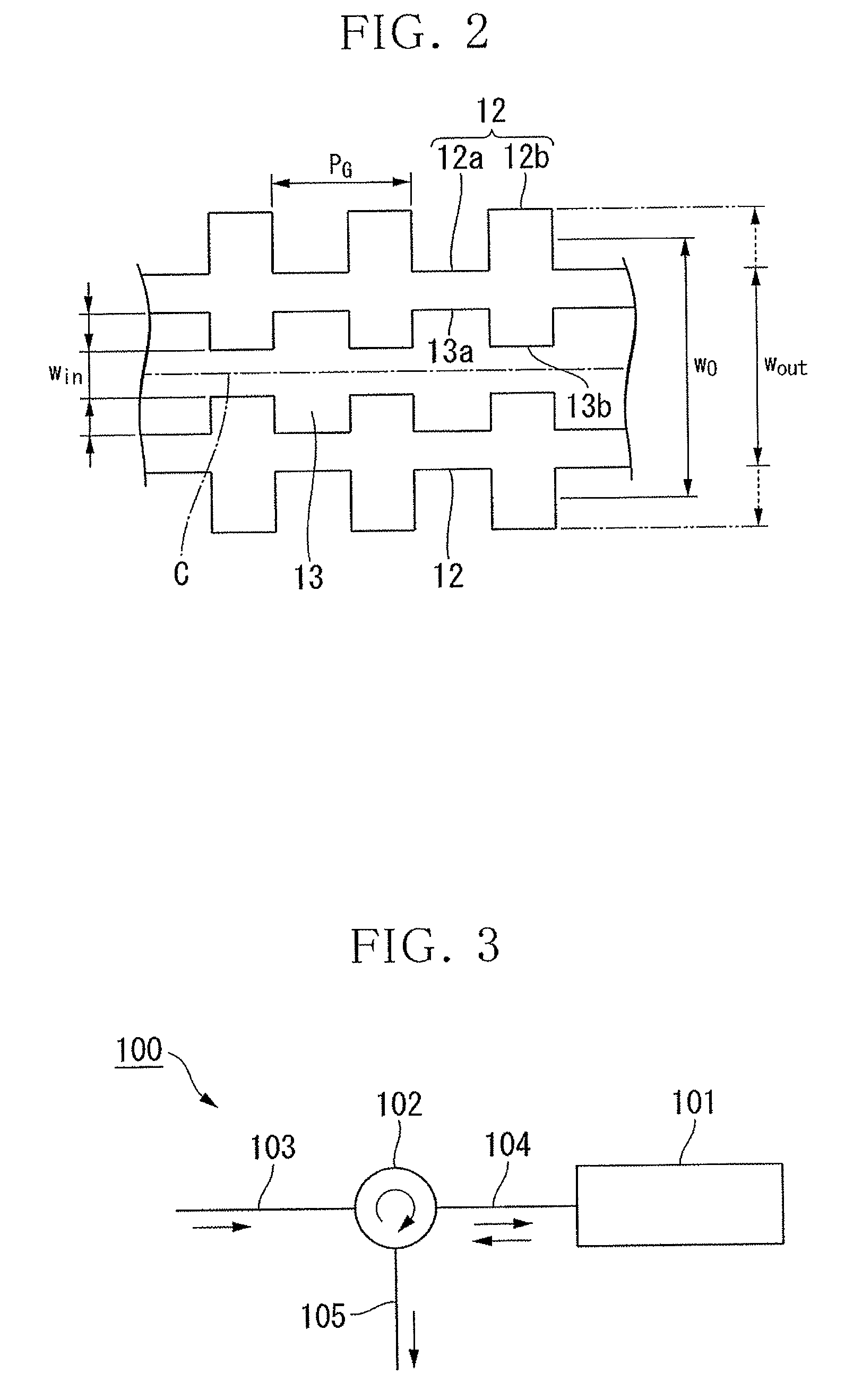Manufacturing method of planar optical waveguide device with grating structure
a technology of planar optical waveguide and grating structure, which is applied in the direction of photomechanical equipment, instruments, originals for photomechanical treatment, etc., can solve the problems of large amount of power consumed by a computer system or a high-end router, economic efficiency but also environmental impact, and the price of the optical component will drop in the future. , to achieve the effect of easy and precise formation, low cost and reduced length
- Summary
- Abstract
- Description
- Claims
- Application Information
AI Technical Summary
Benefits of technology
Problems solved by technology
Method used
Image
Examples
first example
[0271]As shown in FIGS. 1A to 1C, the chromatic dispersion compensator of the polarization independent planar optical waveguide in which the core was formed of silicon nitride (SiN) and the cladding was formed of silica glass (SiO2) and which had the grating structure on the sidewall and upper portion of the core of the optical waveguide was designed and manufactured.
[0272]The cross-sectional structure of the optical waveguide was designed according to the structure of FIG. 1C, and the correlation of win and wout with the effective refractive index of the optical waveguide was calculated as shown in FIG. 5.
[0273]Then, the grating pattern was designed. The designed center frequency was 188.4 THz. That is, the designed center wavelength was 1591.255 nm. The group delay dispersion and dispersion slope of the single-mode dispersion shifted fiber (DSF) with a length of 100 km which is specified in ITU-T G.653 with a channel interval of 100 GHz in L-Band and over 45 channels in the channe...
second example
[0326]The chromatic dispersion compensator of the planar optical waveguide which had the structure shown in FIG. 36 and in which the inside core was formed of silicon (Si), the outside core was formed of silicon nitride (SiN), and the cladding was formed of silica glass (SiO2) was designed and manufactured.
[0327]The cross-sectional structure of the optical waveguide was designed according to the structure of FIG. 36 and the win dependence of the effective refractive index in the TE polarization (mode 1) and the TM polarization (mode 2) shown in FIG. 37A, the relationship between win and wout shown in FIG. 37B, and the correlation of win and wout with the effective refractive index of the optical waveguide shown in FIG. 38 were calculated.
[0328]When designing the optical waveguide structure, the material and dimensions of each portion adopted are as follows. The inside cores 21 and 22 were formed of silicon (Si), the central gap 23 was formed of silica glass (SiO2), the outside core ...
PUM
 Login to View More
Login to View More Abstract
Description
Claims
Application Information
 Login to View More
Login to View More - R&D
- Intellectual Property
- Life Sciences
- Materials
- Tech Scout
- Unparalleled Data Quality
- Higher Quality Content
- 60% Fewer Hallucinations
Browse by: Latest US Patents, China's latest patents, Technical Efficacy Thesaurus, Application Domain, Technology Topic, Popular Technical Reports.
© 2025 PatSnap. All rights reserved.Legal|Privacy policy|Modern Slavery Act Transparency Statement|Sitemap|About US| Contact US: help@patsnap.com



